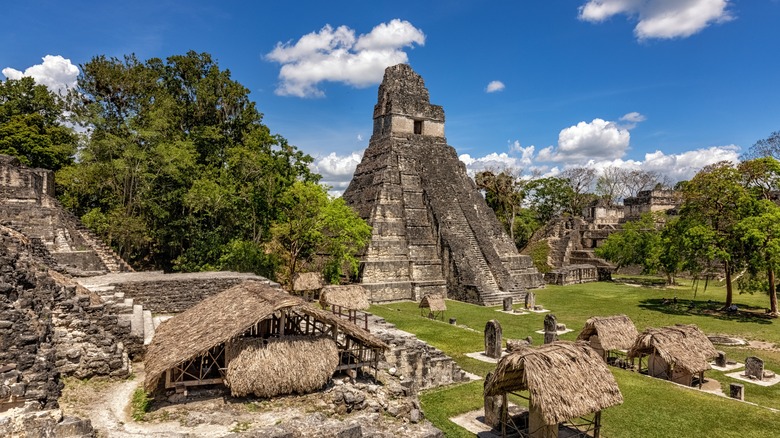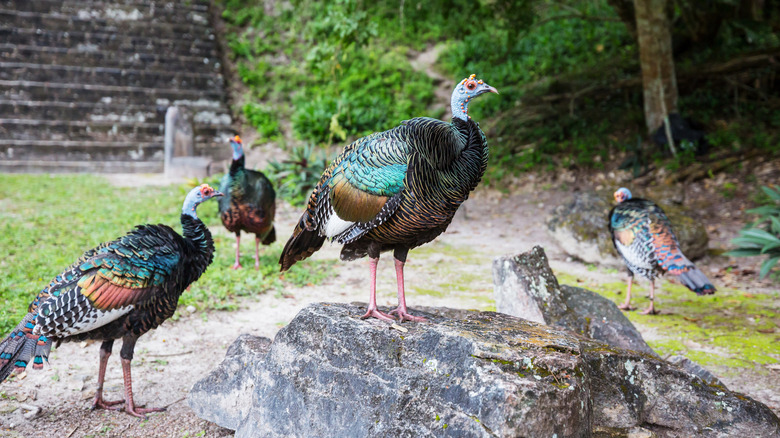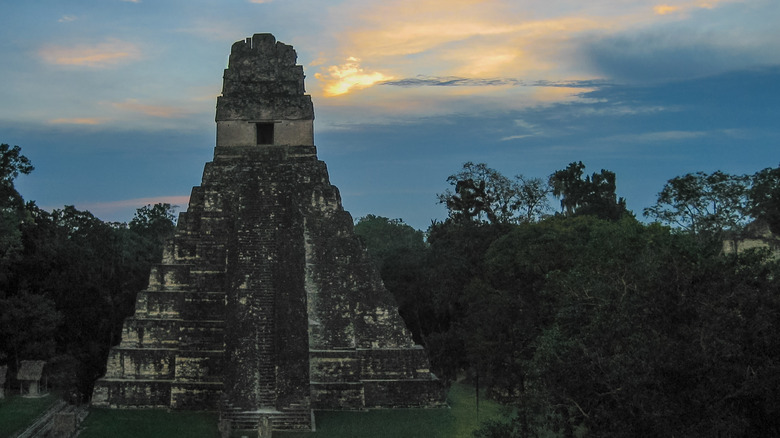This Central American City Is A Must-Add To Your History-Buff Bucket List
Guatemala's ancient city of Tikal was one of the major sites of Mayan civilization, and its historical importance has been recognized with its inclusion in the UNESCO World Heritage Site list. Due to its jungle location, Tikal National Park is of natural as well as cultural value, making it one of few reserves with this dual importance. It's truly earned its place as one of the best historical sites to visit in the world.
The park covers 57,600 hectares, making it one of the biggest archaeological sites in Central America. Tikal's sheer size means that it can rival more famous Mayan ruins like Chichén Itzá in Mexico. There are around 3,000 buildings in the central part of this ancient city, which housed a population of about 100,000 at its peak. Built in 900 B.C., Tikal National Park forms part of the wider Maya Biosphere Reserve, which was created to protect the archaeology and natural heritage of Central America.
What is there to see in Tikal National Park?
Tikal was a political, economic, and military center for the Mayans, so the location includes the ruins of palaces, temples, ceremonial platforms, homes, courts for playing games, and vital infrastructure like roads. Some of these are decorated with stone carvings and murals with hieroglyphics that show Tikal's relationship to other Central American ruins in neighboring countries (like Honduras and Belize).
The highlights of the park are temples I, II, III, IV, V, and VI. The most famous of these is I, also known as the Temple of the Jaguar. There is also the North and South Acropolis, the Lost World Complex, and the Plaza of the Seven Temples. Two museums are also on-site — the Sylvannus G. Morley Museum (which features a reconstructed tomb), and the Stelae Museum (which contains Mayan monuments). Tikal's jungle location means that tropical wildlife like toucans, parrots, wild turkeys, howler monkeys, spider monkeys, coatimundis, agoutis, and foxes can be seen here. Whether it's nature or history, there is something to be seen around every corner.
How to visit Tikal
Most people who come to visit Tikal stay in the tourist-friendly Guatemalan town of Flores. From there, it is a two-hour bus journey to Tikal on a public bus. You can also opt to take a tour or taxi. It costs $20 to visit Tikal for the day and $32 to arrive at 4 a.m. for a sunrise tour. The benefit of going at sunrise is that you get to be there as the mists lift, revealing the temples rising above the forest canopy.
While you can see the most famous of the ruins in one day, you can see much more by exploring the trails over two days. The ruins are helpfully linked by paths, but it may be worth picking up a map at the entrance to make a route to the places you're most interested in. It is also useful to think about the weather when you come to visit. May to October is the rainy season and April and May are the area's hottest months. As Central America is fairly small, you might consider combining your trip with historic sites in Mexico, Belize, and Honduras to discover even more about the ancient Mayans.


